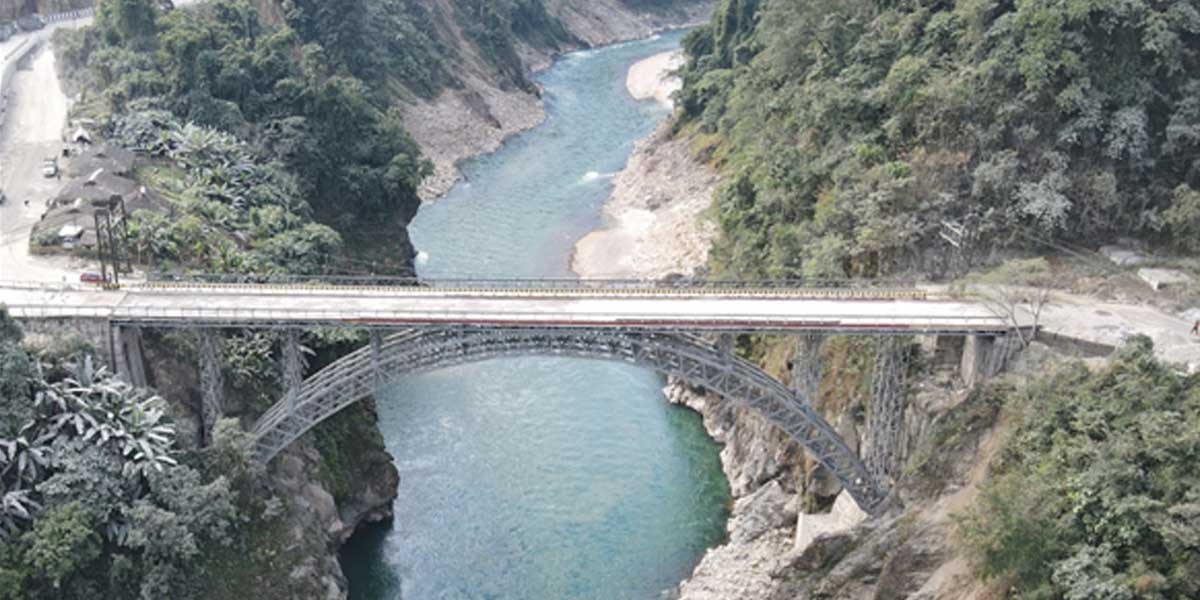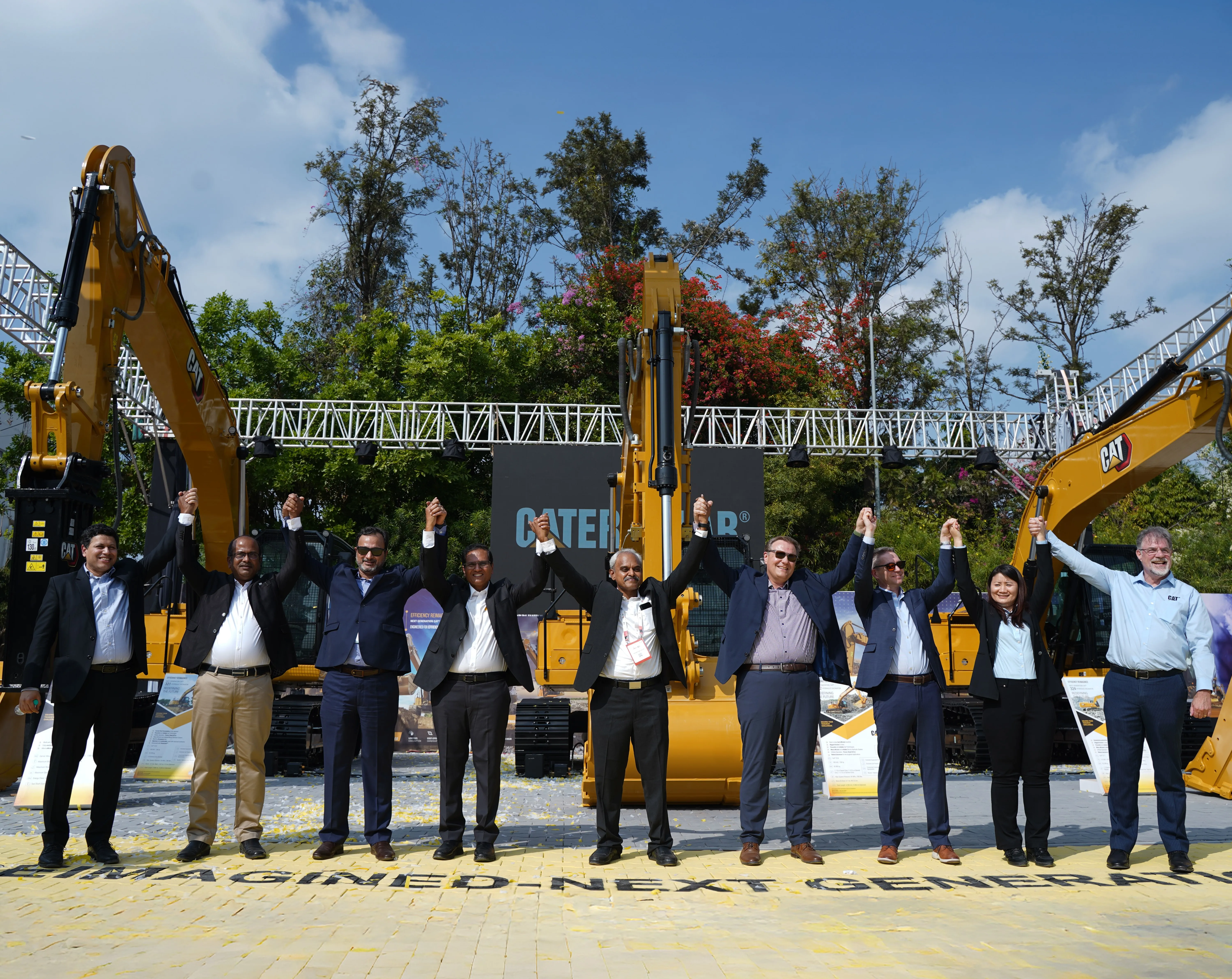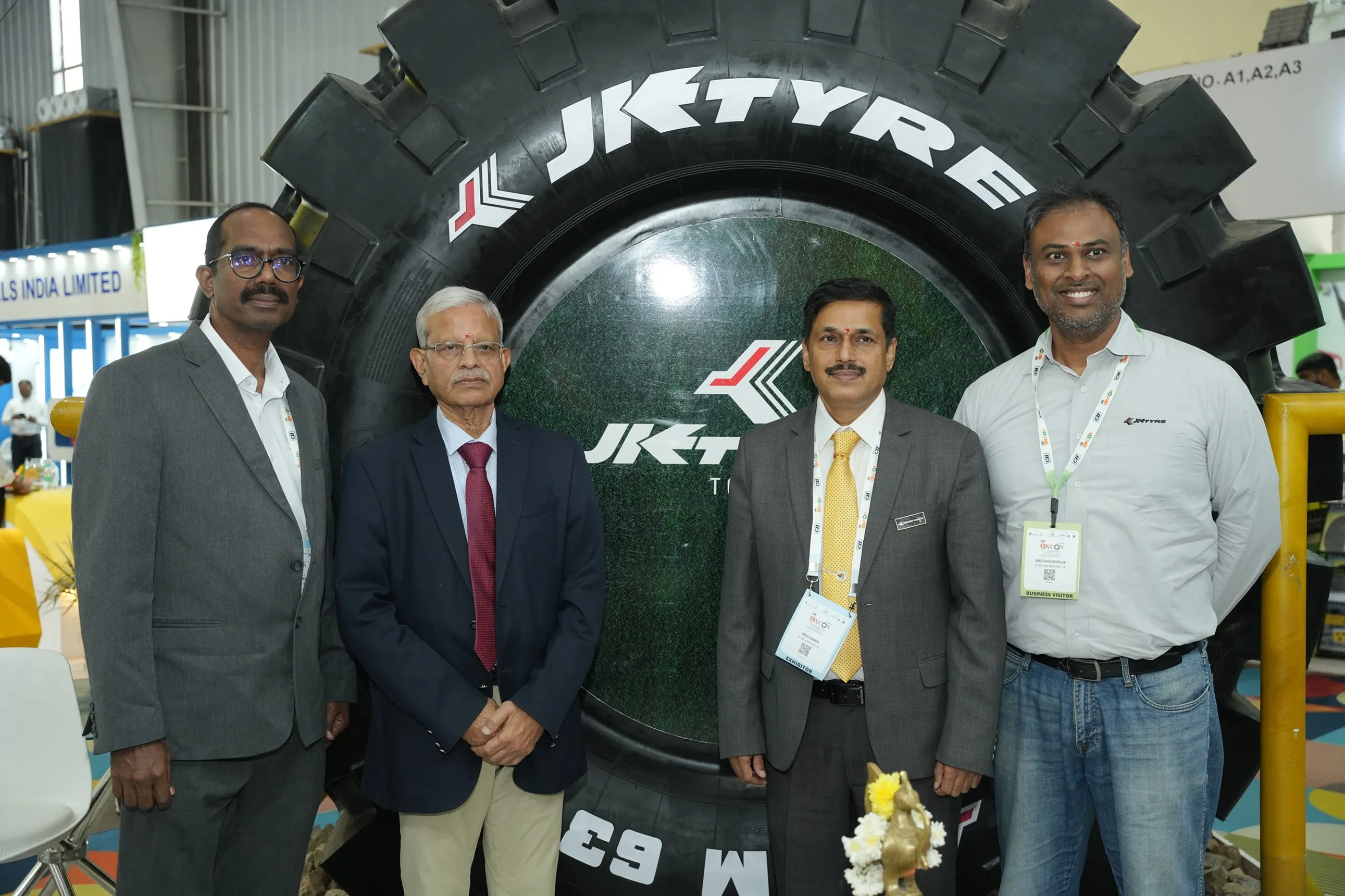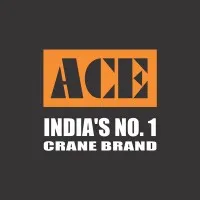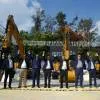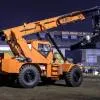In the last six decades, BRO has constructed 61,218 km roads, 915 bridges, 19 airfields, four tunnels and numerous road side furniture and miscellaneous projects in remote border areas of the country. And the organisation is continuously working hard to ramp up infrastructure development at critical places, says Lt Gen Rajeev Chaudhry, Director General, Border Roads Organisation (BRO), as he elaborates on the completed and upcoming projects and the new technologies and materials being adopted by the organisation.
How has BRO been contributing towards the development of defense infrastructure?
In the last two years itself, we have completed and inaugurated 205 infrastructure projects constructed at Rs 5,126 crore in remote border areas. Our resilient and committed Karmyogishave worked day and night amidst the vagaries of terrain and weather in high altitude areas.
The success is an outcome of the procedural reforms we have done within the organisation. We have shortened the decision-making process by simplification and streamlining of our procedures, regular interaction with chief engineers of the projects and increased site visits. Moreover, timely approval of annual works plan andannual procurement plan, delegation of financial powers, prioritising of work and automation of our office functioning has accelerated the pace of works significantly.
The Army and the BRO work in close coordination with each other. Armed Forces are our prime users and during peace time, our prime role is to develop and maintain the operational road infrastructure for Armed Forces in the border areas. During War, we will develop and maintain roads to keep road communication open for our Armed Forces and undertake additional tasks, as laid down by the government, contributing to the war effort.
Most of our roads are operationally critical roads and Army gives us their requirements based on their overall operational strategy. Most of our logistic systems are integrated with them and they also provide protection and support in execution of our projects. Our projects, which are spread all over the border areas, work in synchronisation with the local army formations.
The border areas where we are working have rugged terrain and adverse weather conditions. Due to this, we get limited working season. For instance, in Ladakh, this working season is limited to five to six months in a year. As an average, in last seven years, we have achieved 856 km of road construction per year under extremely challenging condition at sub-zero temperatures (up to -30 degrees) and at an average altitude varying from 9,000 ft up to 19,000 ft. With renewed impetus on bridging, we have been able to increase on annual average of constructing bridges to 3,020 m per year for the period from 2015 to 2022, ever since the BRO came under the MoD as against the previous seven-year average of 1,224 m per year for the period from 2008 to 2015. Bettering this average, last year, the BRO constructed 67 bridges at a total length of 3,687 m. Project Sampark in Jammu has successfully achieved 1,150 m of bridging targets in the current financial year against a total target of 984.51 m. Additionally, BRO is working on 11 tunnels and nine are under planning stage. We are also working on two important airfields at Bagdogra and Barrackpore. The annual target for construction of roads we have taken up for next year is 1,260 km.
Tell us about the opportunities coming along for the construction industry with BRO projects.
We are looking at the industry to provide us tailor-made LIDAR drones to help out the men on ground. Navigation is another aspect where we are in the lookout for some innovative ideas. Snow clearance operations by our men and machines are done in a challenging environment. Our karmyogis are operating at places with over 30 ft snow to clear the roads. Here the major challenges are identification of correct road alignment. Navigation and surveillance equipment to assist these operators will go a long way in mitigating the challenges.
To provide all-weather connectivity, BRO is also undertaking many projects to construct small tunnels departmentally. We are looking at the industry to provide us with state-of-the-art and indigenised jumbo rock drills and shotcretingmachines.
For bridge construction, the industry can provide us with indigenous through type steel bridges and mountain foot bridges.And since a large number of projects are in places that fall in seismic zone VI & V, we want robust engineering solutions for construction of bridges. For roads, we are looking at solutions for construction along permafrost region and also environment-friendly solutions.
In high altitude areas above 14,000-18,000 ft, where a lot of our projects are going on, the air is rarefied and the efficiency of the equipment is reduced to 50-60 per cent. Solution to this major problem we face will be welcomed as the reduced efficiency affects the project timeline already marred with the reduced working window.
We also need construction techniques that are eco-friendly and sustainable. We have adopted the use of steel slag and plastic-coated aggregates in some projects. However, more solutions would help the bigger cause of carbon neutrality.
Recently, we signed a MoU with Innovations for Defence Excellence (iDEX) – the flagship initiative of the Department of Defence Production – during the recently concluded Aero-India 2023 in Bengaluru. The iDEX will facilitate BRO and provide tailor-made solutions for the difficulties and challenges encountered during execution and development of infrastructure projects in remote border areas. This this, we are also exploring the feasibility of adopting space technology for monitoring our assets and enhancing the pace and quality of our DPRs.
How has BRO been overcoming the key execution challenges?
Every region where BRO operates offers a peculiar challenge, marred with a short working window to execute all works.BRO Karamyogis continuously works in tough high-altitude terrain with adverse weather conditions and harsh environment. However, motivation is the key to overcome such adversities. We are however, fortunate to have able and committed junior leaders at all places that are always at the fore front and lead by example. In high altitude areas above 14,000-18,000 ft, the oxygen in the atmosphere goes down considerably and at places we encounter upto 50 per cent lesser oxygen than MSL. Even the machines are not left untouched, as low oxygen in atmosphere forces machines to operate with reduced efficiency.
In spite of all the odds, BRO is continuously working with the spirit of “We Will Either Find a Way or Make One”. We have made engineering marvels at unimaginable places, and one such example is construction of world’s highest motorable road over Umling La pass at an altitude of 19,024 ft. High wind speeds and low oxygen levels encountered throughout the year forced us to be innovative. It must be understood that both men and machine were working with 50 per cent efficiency.
It is also pertinent to mention that roads across 10 of top 13 highest passes in the world have been constructed and maintained by BRO. With the effects of climate change getting more visible in our north-eastern sector, our projects are facing a plethora of challenges – unprecedented rainfall, massive landslides, destabilised mountain slopes. Such is the intensity of rainfall in the region that our major resources are consumed in keeping the road traffic worthy.
Even in the thick of pandemic in 2020-2021, when the world came to a standstill, we continued working with same intensity and completed some of the critical projects such as the Atal Tunnel, Rohtang. The same was inaugurated by the Hon’ble Prime Minister on October 03, 2020.
With the increasing focus on defence infrastructure, how has BRO adopted digitisation and automation to ensure safe construction and avoid time and cost overruns?
The road infrastructure sector, whether in the mainland or along the remote border areas, has resulted in faster and multi-fold socio-economic development in the region. This has become possible due to infusion of latest technologies in the field of construction. These techniques are proving productive and time saving with consistent focus on sustainable development.
Certain new technologies adopted include induction of modular bridges, micro piling under freezing conditions, use of geo cells, cement treated bases, non-frost susceptible sub bases (NFSSB), slope stabilisation using plenty of state-of-the-art techniques, snow erdox system and snow galleries for avalanche protection measures, inter-locking concrete blocks pavements, plastic coated aggregates, cut and fit technology using precast concrete elements, and white topping of roads in heavy rainfall areas.
Some of the important technologies are:
Cementitious bases:BRO has started construction of pavements using cementitious base, to reduce carbon footprints and adverse impact of construction on the environment, roads TCC-Tasking and Maza& Mandala-Debrabu-Naga GG in Arunachal Pradesh are being developed using this technology.
Hill Protection: Since BRO primarily works in ecologically sensitive areas, we are using various new technologies for slope stabilisation to mitigate landslides and protect hill slopes. this is being carried by using various methods such as drapery with hill side gabion wall, dynamic rockfall barrier, secured drapery with micro piling and rockfall embankment, geo breast wall, biodegradable coir reinforced with gabion wall, rock and bolt method and use of geotextile material with Erdox-cruciform horizontal consolidation units, geo synthetics, use of pre-stressed cable anchor, reinforced Geomat, hydro seeding and non-woven geo textile, geosynthetic cementitious composite mat, geo-synthetic membrane.
Inter Locking Concrete Blocks (ILCBs): ILCBs are being laid over high-altitude mountain passes experiencing heavy snowfall, this has facilitated seamless snow clearance operations using tracked earth movers and reduced damages to roads. This practice has exponentially brought down the maintenance cost and ensured speedy clearance of roads in challenging areas with minimum disruption to traffic. Further, laying of ILCBs has resulted in reduced wear and tear of equipment and vehicles and has enhanced riding quality of the roads.
Pre-cast cut andcover technology: For the first time, BRO is using Lithelyarch®technology for the construction of cut andcover tunnel in Ladakh.
White Topping Technology: White topping is a Portland Cement Concrete (PCC) overlay that is constructed on top of an existing bituminous road. It acts as a long-term alternative for the rehabilitation or structural strengthening of roads. A pilot project of white topping for rehabilitation of pavement is underway on Tuting-Bona Road in Arunachal Pradesh, which experiences heavy rainfall.
Use of shredded plastic in road works: Alive to climate change, encouraging “Waste to Wealth” initiative of the government, and promoting sustainable development – a number of BRO projects are using environment-friendly plastic waste.
Use of Steel Slag in Road Construction: The BRO has constructed 1 km stretch of Joram-Koloriang Road in Arunachal Pradesh using steel slag in technical consultation with CRRI and Steel Slag from Tata Steel.Route Guidance System: BRO is conducting several trials at Zojila Pass using thissystem, in which, GPS server fed with road alignment data is attached to snow clearance equipment to obtain precise location of the road. This will equip the operators with enhanced safety while undertaking extremely risky snow clearance operations.
We are keeping up with modern technology and collaborating with academics and professionals in road construction. Our R&D project in Shillong tackles construction challenges in different locations.
Tell us about the spending required to develop such infrastructure.
The fund allocated to the BRO around five years back used to be in the range of Rs 4,500 crore. This has gone up to Rs 13,500 crore in FY2022-23, a threefold increase. This year, breaking all previous records, we are expecting to touch an expenditure of Rs 15,000 crore with a 40 per cent increase in the capital budget for GS roads from Rs 2,500 crore to Rs 3,500 crore. We have been assured that availability of funds will not be a constraint for development of critical road infrastructure along our borders.
The government is allotting us more work to achieve faster results. The budget allocation has increased manifolds in the last few years. We have seen an unprecedented 100 per cent jump in capital budget in just two years from Rs 2,500 crore in financial year 2021-22 to Rs 5,000 crore in 2023-24 reinforcing the Nation’s trust in BRO.How do you see projects in the North-East and other borders strengthening India’s defence infrastructure in the next three to five years?
In 2021, BRO completed a total of 102 major road infrastructure projects in a single year, which is a record by any road construction agency in the country. Out of these, 52 infrastructure projects worth Rs 1,389.03 crore were inaugurated in eastern states of Arunachal Pradesh, Sikkim, Assam, West Bengal, Mizoram and Nagaland. The construction of “India’s first indigenously built Cl 70 double lane modular bridge at 11000 ft” at Flag Hill, Dokala in Sikkim was widely appreciated. In October 28, 2022, BRO completed another 75 infrastructureprojects, of which, 22 projects worth Rs 443.14 crore were completed in north-eastern states. There has been an upsurge in the construction of roads close to border areas in Arunachal Pradesh, which include road TCC-Taksing, road TCC-Maza, road Hapoli-Sarli-Huri (Huri Axis), road Daporijo-Taliha, road Mipi – Andrala, road Kupup–Sherathang, Zedong-Donkyala-Kerang (Z-D-K), Indo-Myanmar Border Fencing, rehab works on Kohima-Pedi-Peren roads in Sikkim, Manipur and Nagaland states.
Some of the important bridges under construction and completed include Lai & Signature Steel Arch Bridge over Siyom River, Simar Bridge, Sangam Bridge, and Sher-e-Thapa Bridge in Arunachal Pradesh.
The Hon’ble Raksha Mantri, Shri Rajnath Singh on January 03,2023, inaugurated and dedicated 28 infrastructure projects to the nation at Rs 724 crore. In a ceremony organised by the BRO at Siyom Bridge on Along-Yinkiong Road in Arunachal Pradesh, the Hon’ble Raksha Mantri inaugurated 22 bridges, threeroads and three other miscellaneous projects. Of these, five have been constructed in Arunachal Pradesh and three in Sikkim. The highlight of the event was the inauguration of the “100-m-long, class 70 steel arch superstructure Siyom Bridge on Along-Yinkiong Road over Siyom River in Arunachal Pradesh”. This year, breaking all the records, we are planning to complete a total of 176 infrastructure projects at Rs 6,377 crore. Out of these, 54 projects are planned to be completed in the north-eastern states consisting of 10 roads, 39 bridges, two runways and two tunnels along with one IMB Fencing work at Rs 2,533 crore.
